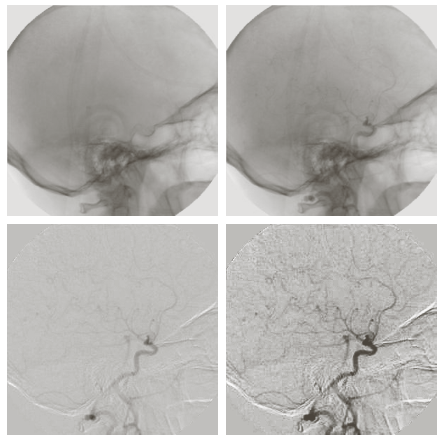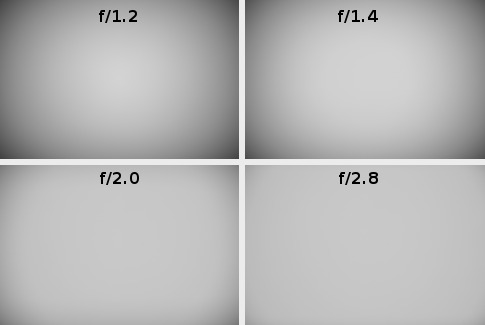Can use subtraction for image masks (e.g. to remove constant background).
Subtraction is used in angiograms: after injection of
contrasting agent, subtract the original image, then do constrast
stretching to emphasize the contrasting agent.

[Gonzales and Woods figure 2.28]
top-left: no contrasting agent, top-right: with contrasting agent
bottom-left: difference; bottom-right: with constrast stetching
Multiplication can be used to correct patterns of uneven
illumination.
Below the left image has an uneven pattern of illumination,
shown in the middle image. The right image is equal to the left
image multiplied by the recipricol of the middle image.

[Gonzales and Woods figure 2.29]
Below, the left image shows "vignetting", which is a reduction
in illumination with distance from the centre. This is most
obvious at the corners. The right image shows the "de-vignetted"
image, produced, as above, by multiplying by the recipricol of a
background image.

[juzaphoto.com]
Optical vignetting occurs because light arriving
from off the optical axis is blocked by elements of the
lens and travels a longer path.
Pixel vignetting occurs because off-axis light arrives at an
angle to the flat CCD array, causing it to be spread out more
than light arriving from on-axis.
Cameras can store lens-specific vignetting masks and use them
to automatically de-vignette. See below for example masks.

[lenstip.com]



